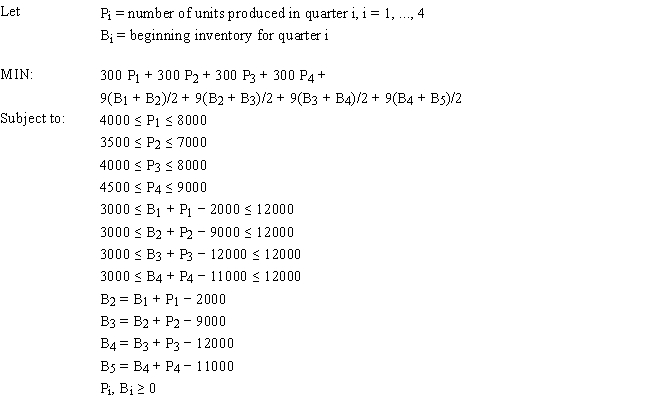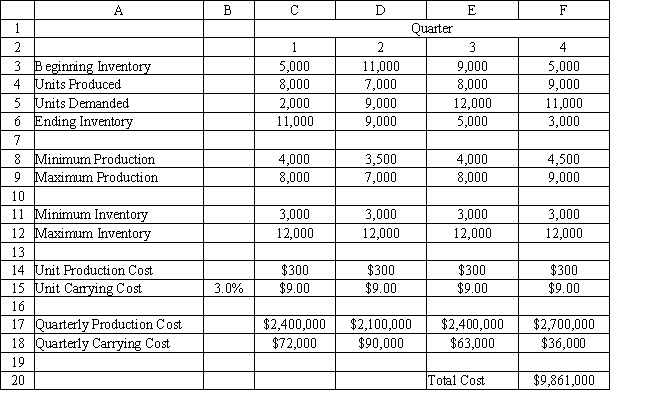Exhibit 3.5
The following questions are based on this problem and accompanying Excel windows.
A company is planning production for the next 4 quarters. They want to minimize the cost of production. The production cost is stable but demand and production capacity vary from quarter to quarter. The maximum amount of inventory which can be held is 12,000 units and management wants to keep at least 3,000 units on hand. Quarterly inventory holding cost is 3% of the cost of production. The company estimates the number of units carried in inventory each month by averaging the beginning and ending inventory for each month. There are currently 5,000 units in inventory. The company wants to produce at no less than one half of its maximum capacity in any quarter. 


-Refer to Exhibit 3.5. What formula should be entered in cell C18 in the accompanying Excel spreadsheet to compute the quarterly carrying costs?
Definitions:
Total Color Blindness
A rare condition where an individual cannot perceive any color, only shades of grey.
Genetic Variation
The diversity in gene frequencies within a population, which contributes to the population's ability to adapt to varying environments.
Observer
A person who watches or notices something without directly participating.
Different Speeds
Refers to varying rates of movement or progress.
Q7: Refer to Exhibit 3.3. Which cells should
Q12: Refer to Exhibit 9.2. Test the significance
Q16: A company wants to locate a new
Q20: The textbook figure of the problem-solving process
Q23: Refer to Dofasco. The company's commitment to
Q29: Specify the differences in the timeframes involved
Q49: Refer to Exhibit 7.1. If the company
Q58: Refer to Exhibit 7.3. Which value should
Q63: The error term <font face="symbol"></font> in a
Q73: Project 3.1- The Diet Problem: Ordering Meals